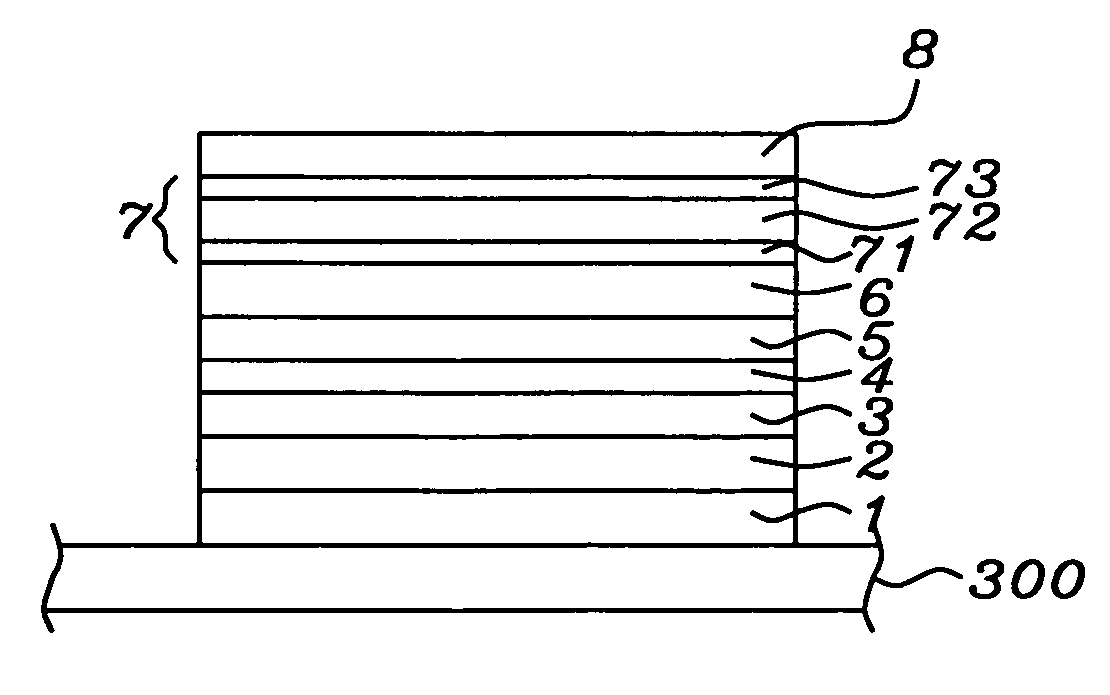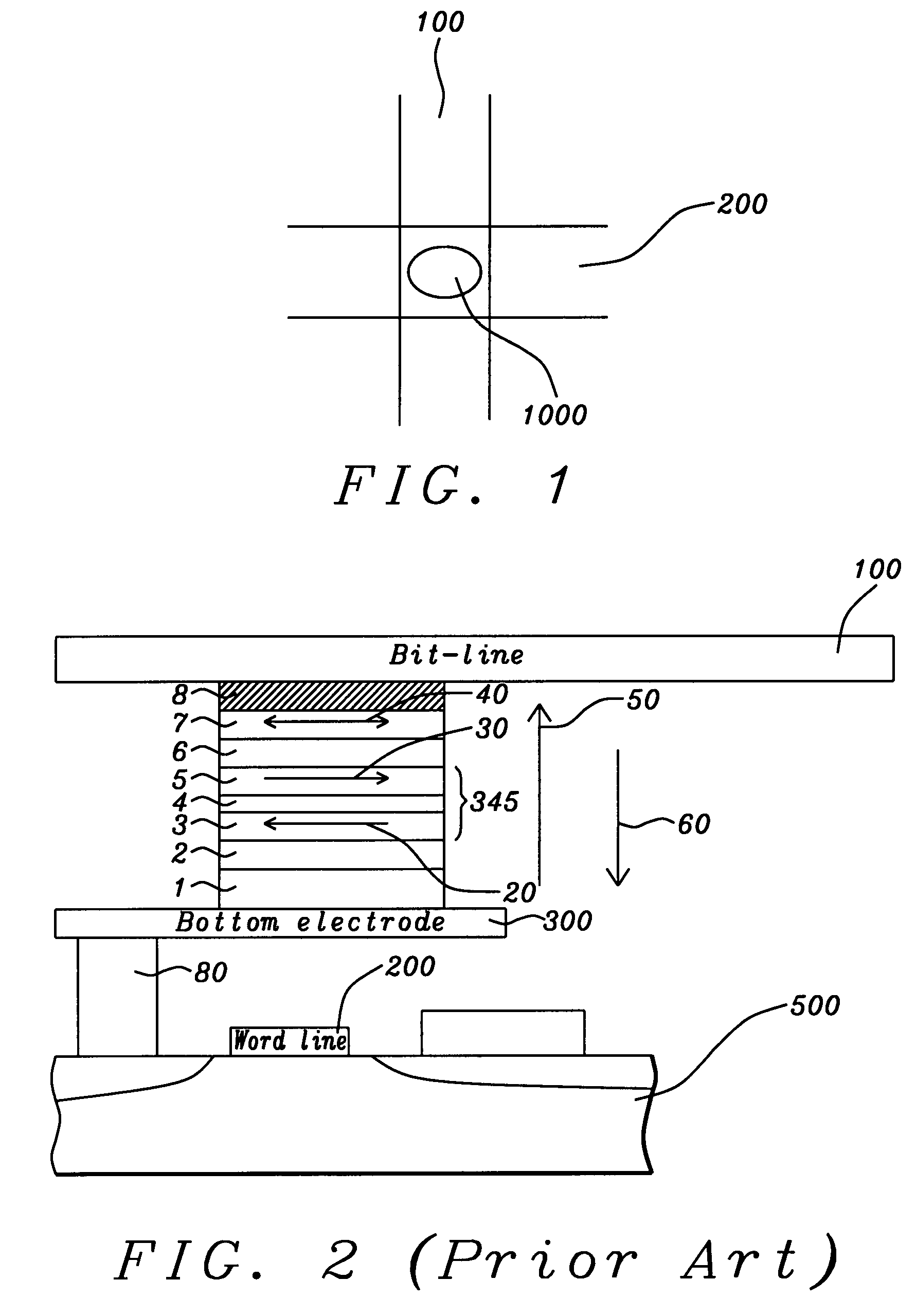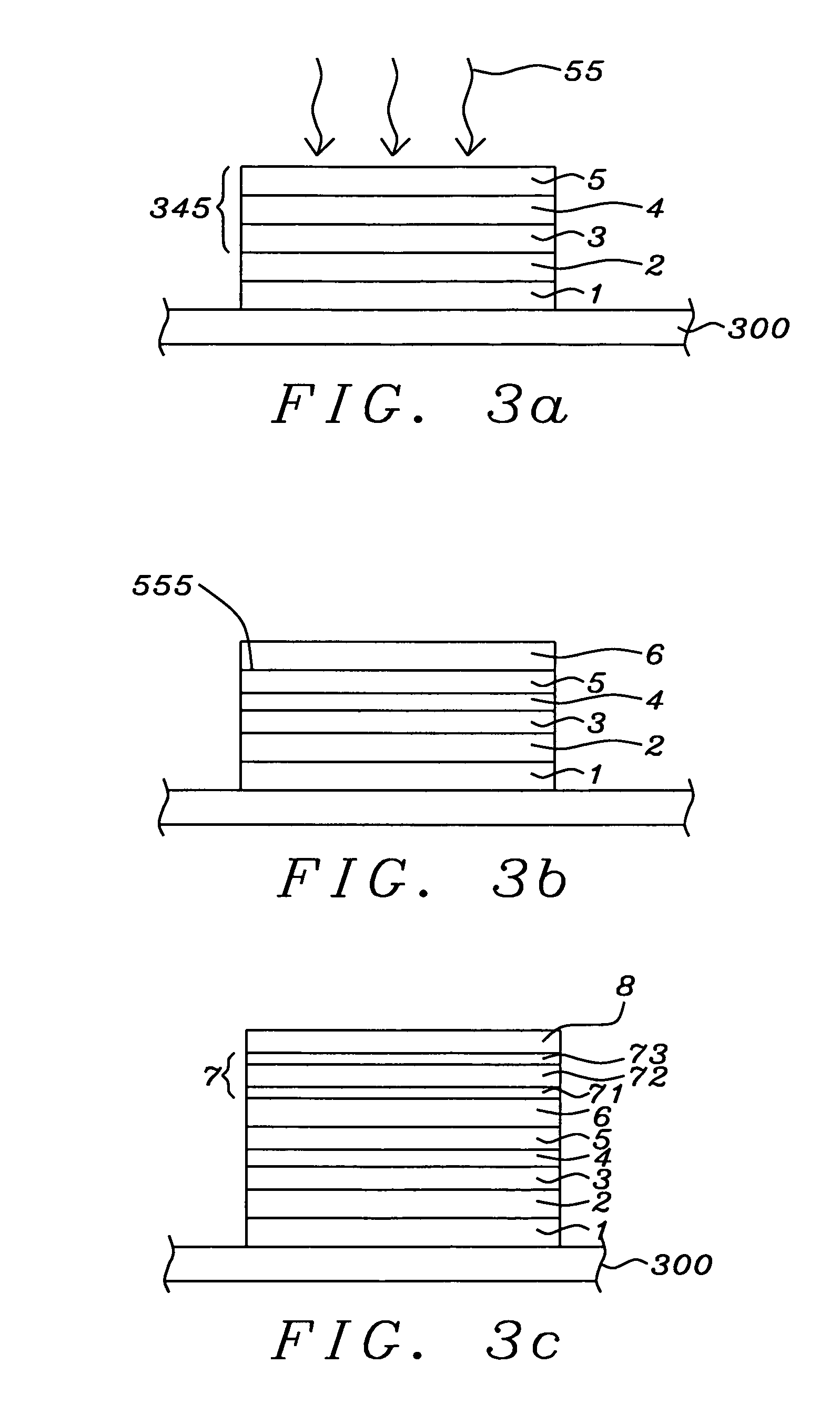High performance MTJ element for STT-RAM and method for making the same
a sttram and high-performance technology, applied in the direction of inductance/transformer/magnet manufacture, magnetic bodies, instruments, etc., can solve the problems of introducing statistical difficulties, and affecting the effect of sttram performan
- Summary
- Abstract
- Description
- Claims
- Application Information
AI Technical Summary
Benefits of technology
Problems solved by technology
Method used
Image
Examples
Embodiment Construction
[0059]The preferred embodiment of the present invention is an STT-RAM memory cell and an array of such cells, in which each cell incorporates an MTJ element that operates in the spin torque transfer (STT) mode. The MTJ element includes an IrMn pinning layer, an SyAP pinned layer, a crystalline barrier layer of naturally oxidized MgO and a crystalline-Fe-sandwiched CoFeB free layer having Gilbert damping constants that are lower than those associated with free layers of only amorphous CoFeB.
[0060]The preferred MTJ stack configuration is:[0061]BE / NiCr50 / Ru20 / MnIr70 / Co75Fe2523 (AP2) / Ru7.5 / CoFeB20—Co75Fe256-7 (AP1) / PT / Mg8-NOX—Mg4 / Fe3-Co60Fe20B2020-Fe6(FL) / Ta
[0062]Referring to FIG. 3a, FIGS. 3b and 3c, there will be schematically shown the process steps by which the stack configuration is formed. We will retain the essential elements of the numbering of FIG. 2.
[0063]Referring first to FIG. 3a, there is shown the structure labeled BE above, which denotes a bottom conducting line or electr...
PUM
 Login to View More
Login to View More Abstract
Description
Claims
Application Information
 Login to View More
Login to View More - R&D
- Intellectual Property
- Life Sciences
- Materials
- Tech Scout
- Unparalleled Data Quality
- Higher Quality Content
- 60% Fewer Hallucinations
Browse by: Latest US Patents, China's latest patents, Technical Efficacy Thesaurus, Application Domain, Technology Topic, Popular Technical Reports.
© 2025 PatSnap. All rights reserved.Legal|Privacy policy|Modern Slavery Act Transparency Statement|Sitemap|About US| Contact US: help@patsnap.com



